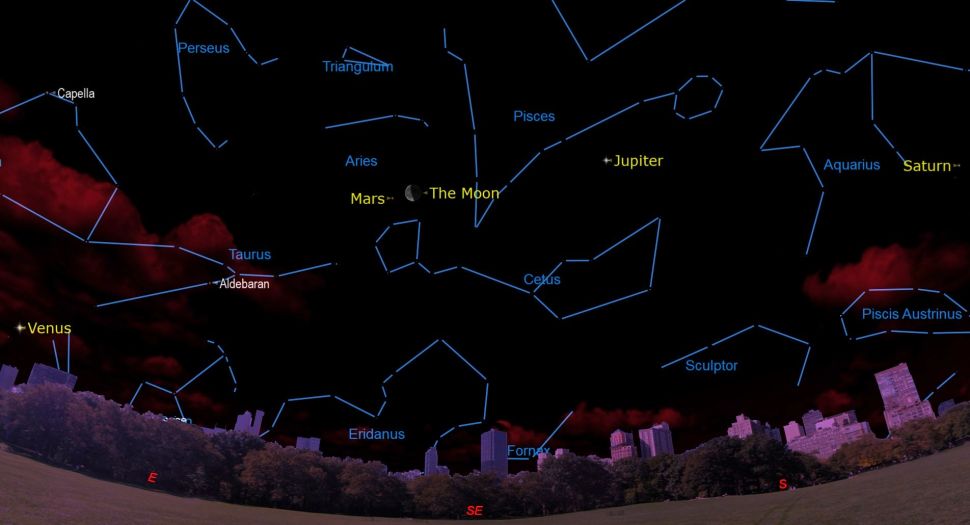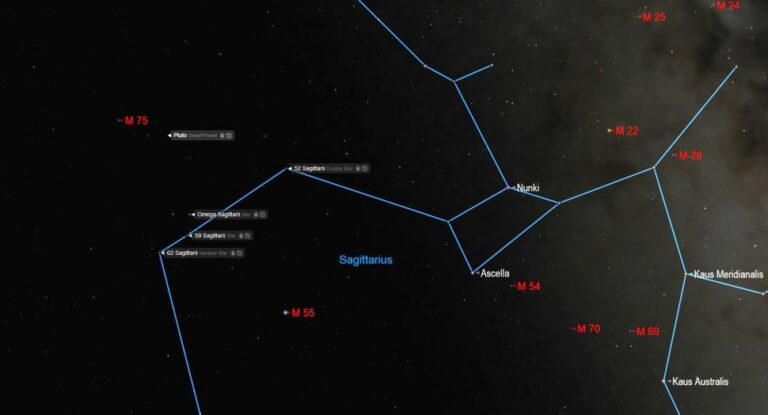When Mars and the third quarter moon meet in the night sky, dim Pluto shines best.
Here’s how to observe these solar system worlds overnight Wednesday (July 20) and Thursday (July 21).
Get your observing equipment ready for some world-hunting.
Dwarf planet Pluto will reach its opposition, or brightest appearance in the sky, late on Wednesday (July 20). Stay up until dawn, and you can watch the third-quarter moon approach Mars in the brightening sky Thursday (July 21).
Be forewarned that Pluto is an observing challenge, as it is only visible in the largest of backyard telescopes. Its maximum magnitude will be 14.3, compared with naked-eye stars that shine at -6.
However, we can at least show you the region of the sky that Pluto is presently occupying. Look for the medium-bright star Omega Sagittarii, which shines well to the left (east) of Sagittarius’ teapot-shaped asterism, according to astronomer Chris Vaughan of Astrogeo.ca(opens in new tab), who creates Space.com’s monthly Night Sky calendar in collaboration with Simulation Curriculum.

The distance between Pluto and the star is around three fingerwidths (3.5 degrees). Pluto is two degrees to the lower right of Messier 75, a bright globular star cluster.
Fortunately, the moon and Mars will be visible to the unaided eye and are considerably easier to identify.
On Thursday, the moon will rise as a waning crescent early in the morning, beginning at 12:32 a.m. local time in New York City. (To get the rise time in your area, visit Timeanddate.com(opens in new tab).) A few while later, Mars should rise.
Wait until around 2 a.m. local time, when the moon and Mars will be clearly visible above the horizon. Locate the moon, then scan to the upper right a few finger widths (4 degrees) to find Mars. One binocular field will encompass both realms.
They will be visible in the sky until dawn, which will happen at 5 a.m. If it’s cloudy, you can see the two planets once more on Friday morning (July 22), albeit the moon will now be on Mars’ lower left.
Around 1500 GMT on Thursday, observers in eastern China, Japan, and northeastern Russia will be able to see the moon pass in front of (occult) Mars.
Looking for a telescope or pair of binoculars to view the moon, Mars, or Pluto? You can get assistance from our recommendations to the top telescope and binocular deals right now. You can also get ready to capture the next skywatching sight on your own with the aid of our top astrophotography cameras and lenses.
Do not forget to share your opinion with us to provide you with the best posts !




0 Comments